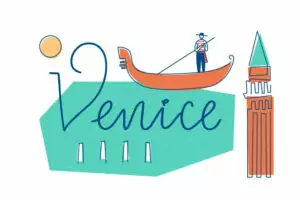When learning a new language, it’s essential to grasp not only the basic greetings but also expressions of gratitude and politeness. In Italian culture, expressing gratitude and saying “you’re welcome” are gestures valued greatly. In this comprehensive guide, we’ll explore seven ways to say “you’re welcome” in Italian, providing examples and conversations to help you confidently navigate various social situations.

✅ AI Essay Writer ✅ AI Detector ✅ Plagchecker ✅ Paraphraser
✅ Summarizer ✅ Citation Generator
Mastering the Art of Polite Expressions
Prego – The Easiest and Most Popular Way
The word “prego” is the most common and straightforward way to say “you’re welcome” in Italian. It is used in both casual and formal settings, making it a versatile expression of politeness. Moreover, “prego” carries another meaning, serving as “please” or “after you” in certain contexts.
Example 1:
- Grazie per il tuo aiuto! (Thank you for your help!)
- Prego! (You’re welcome!/Please!)
Example 2:
- Posso passare? (Can I pass?)
- Prego! (Please!/After you!)
Di Niente – The Equivalent of “Nothing”
“Di niente” is an equally common expression for “you’re welcome” in Italian. This phrase translates to “it’s nothing” and is used to downplay the act of kindness or help extended to someone.
Example:
- Grazie per la tua gentilezza. (Thank you for your kindness.)
- Di niente! (You’re welcome!/It’s nothing!)
Figurati! – Si Figuri! – “Don’t Mention It!”
“Figurati” (informal) and “Si figuri” (formal) both convey the meaning of “don’t mention it” or “it was nothing.” These phrases are used to respond to expressions of gratitude, emphasizing that the favor was given willingly and without expecting anything in return.
Example:
- Grazie per il regalo! (Thank you for the gift!)
- Figurati!/Si figuri! (Don’t mention it!/It was nothing!)
Non C’è di Che – “You’re Welcome with Pleasure”
“Non c’è di che” is a gracious way to respond to someone’s thanks, suggesting that you were happy to help or provide assistance. This phrase expresses sincerity and genuine appreciation for the opportunity to be of service.
Example:
- Grazie per il tuo supporto. (Thank you for your support.)
- Non c’è di che. (You’re welcome with pleasure.)
Non C’è Problema – “No Problem at All”
Similar to the English phrase “no problem,” “Non c’è problema” is a casual and friendly way to say “you’re welcome.” It reassures the person that their request or gesture was not burdensome in any way.
Example:
- Mi scuso per il ritardo. (I apologize for the delay.)
- Non c’è problema. (No problem at all.)
E Di Che? – “What Are You Thanking Me For?”
In informal settings, you might hear the expression “E di che?” which directly translates to “What are you thanking me for?” This phrase is used playfully to acknowledge the gratitude and build a friendly atmosphere.
Example:
- Grazie per il passaggio. (Thank you for the ride.)
- E di che? (What are you thanking me for?)
Ci Mancherebbe Altro! – “Of Course, Obviously!”
The phrase “Ci mancherebbe altro!” conveys a sense of strong affirmation, expressing that the favor or assistance provided was a pleasure and that it would be unimaginable not to help.
Example:
- Grazie per avermi aiutato. (Thank you for helping me.)
- Ci mancherebbe altro! (Of course, obviously!)
Mastering Context and Nuances
It’s crucial to understand the appropriate context and nuances associated with each expression. Some phrases are used more formally, while others are reserved for close friends or family members. Paying attention to the tone and context will enhance your language skills and social interactions in Italian-speaking environments.
Common Translations of “You’re Welcome”
| English | Italian |
|---|---|
| You’re welcome | Prego |
| It’s nothing | Di niente |
| Don’t mention it | Figurati/Si figuri |
| You’re welcome | Non c’è di che |
| No problem at all | Non c’è problema |
| What are you thanking me for? | E di che? |
| Of course, obviously | Ci mancherebbe altro! |
Practical Use of “Prego” in Different Contexts:
The word “prego” has multiple meanings and can be used in various situations. Here are some practical examples of using “prego” in different contexts:
At the Cash Register:
- Cashier: Prego! (You first!/After you!)
- Customer: Grazie! (Thank you!)
Holding the Door:
- Person A: Prego! (Please go ahead!)
- Person B: Grazie! (Thank you!)
Offering a Seat on Public Transportation:
- Person A: Prego! (Please take the seat!)
- Person B: Grazie! (Thank you!)
Conclusion
Politeness and expressions of gratitude are essential elements of communication in any language, and Italian is no exception. By mastering the various ways to say “you’re welcome” in Italian, you not only show your respect for the local culture but also build stronger connections with Italian speakers. Use the examples and conversations provided in this guide to navigate social situations with ease and confidence. Immerse yourself in Italian-speaking environments, practice these phrases, and soon enough, they’ll become second nature to you. Happy learning!
FAQ
Can “prego” also mean “please” in certain contexts in Italian?
Yes, “prego” can have the additional meaning of “please” in certain contexts. When used as a polite interjection, it can indicate “after you” or “you first” in situations like holding a door or giving way to someone. It expresses courtesy and is used to show politeness and deference to others.
How do you pronounce “you’re welcome” in Italian?
“You’re welcome” in Italian is pronounced as “prego.” The pronunciation is straightforward, with a soft “e” sound, similar to the English word “prey,” followed by a strong “go” sound, as in “go away.” Practice saying it with a gentle tone to convey politeness effectively.
Are there any regional variations in the way “you’re welcome” is said in Italian?
While “prego” is the standard and widely used expression for “you’re welcome” in Italian, there can be slight regional variations in informal contexts. For example, some regions may use “figurati” more frequently, while others might prefer “di niente” as an informal response to gratitude. However, “prego” remains universally understood and used throughout Italy.
What are some other common Italian expressions of gratitude?
In addition to “prego,” there are several other common expressions of gratitude in Italian. Some of them include:
- “Grazie” – Thank you
- “Grazie mille” – Thank you very much
- “Ti ringrazio” – I thank you
- “Grazie di cuore” – Thanks from the heart
- “Molte grazie” – Many thanks
Do Italians use different phrases to respond to “thank you” depending on the situation?
Yes, Italians use different phrases to respond to “thank you” depending on the context and level of formality. Here are some variations:
- Informal settings: “Prego,” “Di niente,” “Figurati,” “Si figuri,” “E di che?” are commonly used.
- Formal settings: “Prego,” “Non c’è di che,” “Non c’è problema,” “Ci mancherebbe altro!” are more appropriate.
- Close relationships: In more intimate relationships, people might respond with affectionate expressions like “Ma figurati!” or “Ma figurati che ci mancherebbe!” showing a deeper level of familiarity and warmth.
Remember that understanding the appropriate context and tone is essential when responding to expressions of gratitude in Italian. Practicing these phrases will help you become more confident and polite when interacting with native Italian speakers.
Follow us on Reddit for more insights and updates.





Comments (0)
Welcome to A*Help comments!
We’re all about debate and discussion at A*Help.
We value the diverse opinions of users, so you may find points of view that you don’t agree with. And that’s cool. However, there are certain things we’re not OK with: attempts to manipulate our data in any way, for example, or the posting of discriminative, offensive, hateful, or disparaging material.